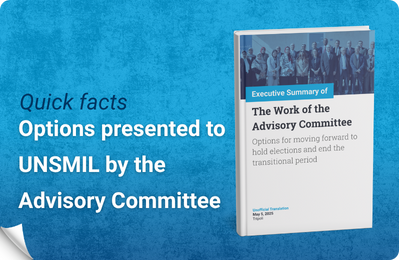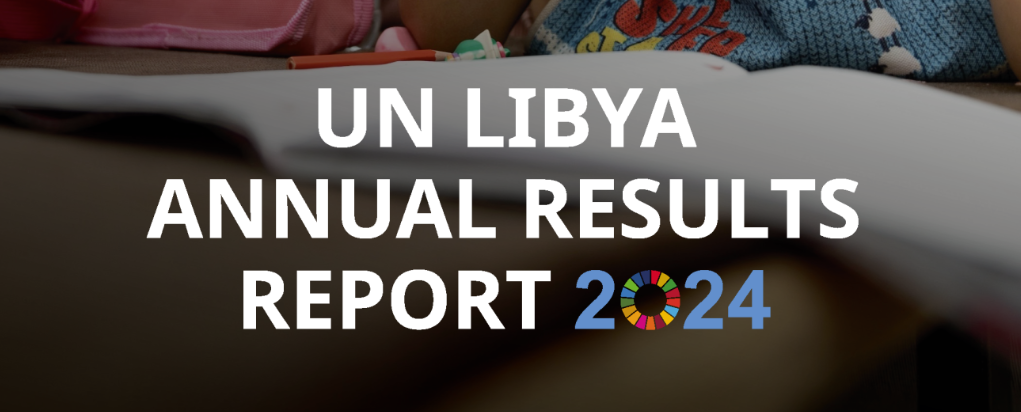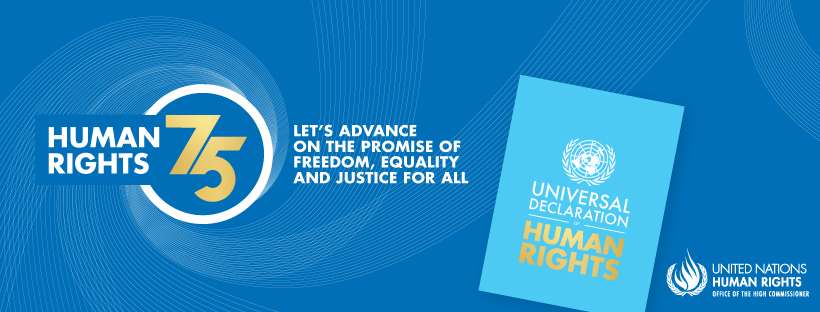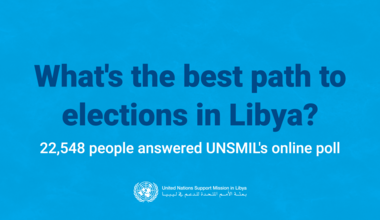Human Rights Report on Civilian Casualties - September 2018
Tunis, 2 October 2018 – From 1 September to 31 September 2018, the United Nations Support Mission in Libya (UNSMIL) documented 40 civilian casualties –18 deaths and 22 injuries – during the conduct of hostilities across Libya. Victims included 14 men and four boys killed, and nine men, five women, one boy and one girl injured. The sex of six other injured individuals could not be determined. The actual number of civilian casualties is believed to be higher. UNSMIL continues to seek to confirm additional civilian casualties in the course of ongoing hostilities in Tripoli.
The majority of civilian casualties were caused by shelling (eight killed and 16 injured), followed by gunfire (eight killed) and explosive remnants of war (ERW, one killed). The exact cause of one death and six other injuries was not determined.
UNSMIL documented civilian casualties in Tripoli (16 killed and 22 injured), Benghazi (one killed) and Warshafana (one killed). Another 57 fighters died during the Tripoli fighting, while the civilian status of a further 12 fatalities could not be ascertained.
UNSMIL documented seven additional casualties from other possible violations of international humanitarian law and violations or abuses of international human rights law in Derna, Benghazi, Sabha and al-Zawiya.
Civilian Casualty Incidents
Tripoli
Fighting between Tripoli-based armed groups, on the one hand, and the al-Kaniyat armed group, al-Soumoud armed group and their allies, on the other, claimed at least 15 civilian lives and led to 22 civilian injuries during the month of September, bringing the total number of civilian casualties since the escalation of the fighting in Tripoli on 26 August to 34 deaths and 23 injuries. The use of weapons with wide area impact and indiscriminate fire caused the majority of civilian casualties in Tripoli. On 2 September, the al-Fallah-2 camp hosting Tawerghan IDP families was shelled, reportedly by rockets, leading to two deaths and 15 injuries among residents. Five women and two children were among those injured. On 3 September, a detainee sustained a shrapnel wound, when the Tariq al-Matar detention centre for migrants under the control of the Department of Combatting Illegal Migration was caught in crossfire. A ceasefire agreement between parties to the conflict reached under the auspices of UNSMIL on 4 September and supplemented by a consolidation document on 9 September brought a temporary lull in fighting. On 17 September, armed confrontations resumed in Tripoli’s southern outskirts, increasing the civilian casualty toll. Since 26 September, fighting has subsided once more after a reconciliation agreement was reached between Tripoli-based armed groups and Tarhouna-based armed groups.
On 10 September, a complex attack on the Tripoli headquarters of the National Oil Corporation (NOC) involving the use of direct gunfire, grenades and the detonation of suicide vests left a NOC employee dead and another six injured. A security guard was also killed during the attack.
Benghazi
On 18 September, a 13-year-old boy was killed when an ERW detonated in front of a relative’s home in the Ganfouda neighborhood of Benghazi.
Warshafana
At least one boy was killed during clashes between Zintan-based and Tripoli-based armed groups in the area of Warsahfana lasting from 28 to 30 September.
Civilian Facilities
On 18 September, an electricity station in the Tripoli neighborhood of Abu Salim was damaged during fighting.
In September, the Brega Oil Company in Tripoli’s Tariq al-Matar neighborhoud was caught in crossfire sustaining material damage, including to oil storage tanks.
Attribution
The so-called Islamic State claimed responsibility for the 10 September attack on the NOC on the “Amaq news agency”.
The Benghazi Revolutionaries Shura Council and allies are believed to have been responsible for leaving mines and ERWs in areas of Benghazi they controlled prior to their retreat.
Casualties from other violations of international humanitarian law and violations or abuses of human rights
On 10 September, the body of a member of military engineering of the Libyan National Army was found in the western outskirts of Derna. The deceased man was stripped down to his underwear, and bore a gunshot wound to the head. According to reports, prior to his death, he received a telephone call about a suspicious unexploded ordinance in the area.
On 11 September, a man sustained a gunshot wound in Benghazi. The source of fire was unknown, and there were no clashes in the vicinity of the incident.
On 12 September, the body of a man bearing torture marks was brought to the al-Zawiya morgue. He had reportedly gone missing days prior from his hometown of Sabratha.
On 20 September, men from al-Qadhadhfa tribe shot at a private vehicle, when it failed to stop at a makeshift checkpoint in Sabha’s Manshiya neighbourhood, killing the driver, a man from the Awlad Suleiman tribe and a passenger, a woman from Sub-Saharan Africa. The days preceding the incident had witnessed armed confrontations between Awlad Suleiman and al-Qadhadhfa tribal forces in Manshiya, leading to several deaths and injuries among fighters.
On 21 September, a four-year-old girl and 13-year-old boy were injured by stray bullets in two separate incidents in the Benghazi neighbourhoods of al-Wehishi and al-Majuri, respectively. There were no clashes in the vicinity at the time of the incidents.
Note
The figures for civilian casualties set out above only include persons killed or injured in the course of hostilities and who were not directly participating in the hostilities. The figures do not include those casualties that are not a direct result of hostilities, for example executions after capture, torture or abductions, or casualties caused as an indirect consequence of hostilities. The figures are based on information UNSMIL has gathered and cross-checked from a broad range of sources in Libya, including human rights defenders, civil society, current and former officials, employees of local governments, community leaders and members, witnesses, others directly affected and media reports. In order to assess the credibility of information obtained, where possible, UNSMIL reviewed documentary information, including medical records, forensic reports and photographic evidence.
The figures are only those that UNSMIL was able to document in the reporting period. They are not likely to be complete and may change as new information emerges about incidents involving civilian casualties that took place during this period.
Similarly, while UNSMIL has systematically tried to ensure that the cases it documented are based on credible information, further verification would be required to attain a higher standard of proof. Due to the security situation, UNSMIL has not been able to carry out direct site visits to all relevant locations in Libya to obtain information. Fear of reprisals against sources further hamper information gathering.
While not all actions leading to civilian casualties breach international humanitarian law, UNSMIL reminds all parties to the conflict that they are under an obligation to target only military objectives. Direct attacks on civilians as well as indiscriminate attacks – which do not distinguish between civilians and fighters – are prohibited. Attacks that are expected to cause incidental loss of civilian life, injury to civilians and damage to civilian objects excessive to the anticipated concrete and direct military advantage are also prohibited. Such attacks amount to war crimes that can be prosecuted by the International Criminal Court.
In order to ensure greater protection of the civilian population and essential infrastructure, all parties engaged in fighting in Libya must cease the use of mortars and other indirect weapons and imprecise aerial bombardments in civilian-populated areas, and not place fighters or other military objectives in populated areas. All executions of captives must cease and all those captured including fighters must be treated humanely in all circumstances. Murdering or torturing captives is also a war crime, regardless of what the captive may be accused of.
Cases highlighted in the “Casualties from other violations of international humanitarian law and violations or abuses of human rights” section include casualties caused during incidents that would constitute a violation of international humanitarian or human rights law, but are not a direct result of hostilities, for examples executions upon capture of civilians and others hors de combat (such as captured fighters) and torture causing death. The section also includes casualties caused by the proliferation of weapons and impunity enjoyed by armed groups and criminal networks – considered as indirect consequences of hostilities. Cases highlighted in the “casualties from other violations” section are not included in the figures for civilian casualties and include only those that UNSMIL documented during the month.
Contact UNSMIL’s Human Rights Monitoring Team to report information on civilian casualties in Libya at the following email address: unsmil-monitoringhumanrightsteam@un.org(link sends e-mail).
 United Nations Peacekeeping
United Nations Peacekeeping UN
UN









